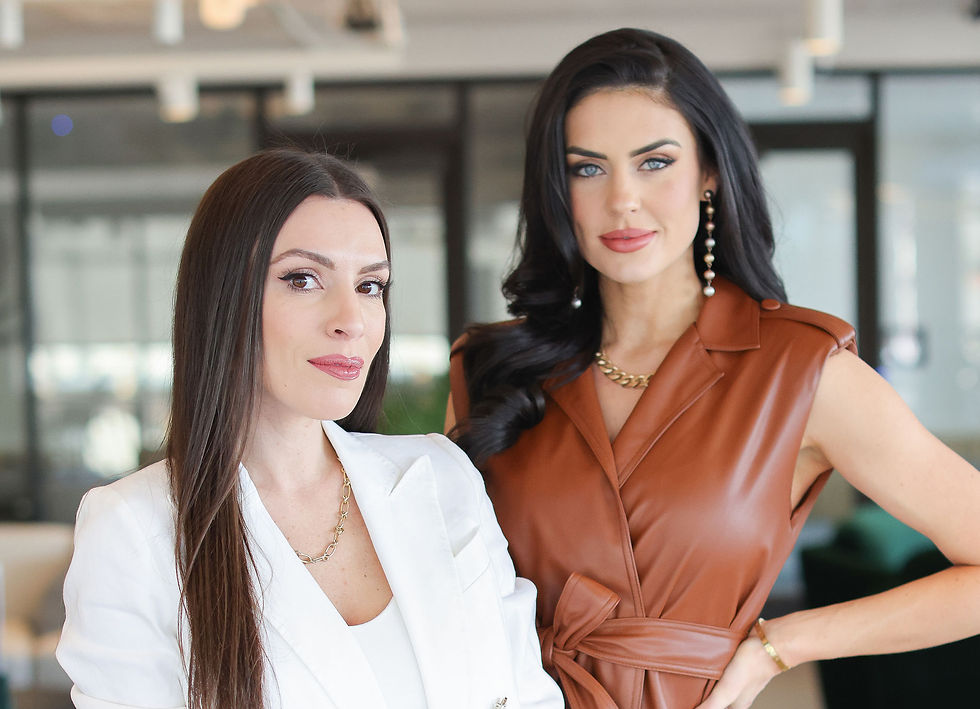All Word-of-Mouth Marketing Isn't Created Equal
- The Patient Whisperers

- Aug 31
- 4 min read
Updated: Oct 6
Get your patients to tell others, "Don't go anywhere but this practice!"
As published in the September/October 2025 issue of Administrative Eyecare. To subscribe or view the entire publication, visit their website.
We all know that the best quality lead, inquiry, and new patient comes from the word-of-mouth referral. In this scenario, the patient’s friend, acquaintance, colleague, or social media connection convinced them to trust your practice before that patient even walked through your door. More of those, please!
When we decided to obsess over patient word-of-mouth, we walked through the process as though we were patients ourselves. We compared notes on our experiences as patients visiting other practices, in other specialties, to give ourselves a fresh perspective. The light bulb went on. In order to confidently tell someone to go to a practice or doctor, it was definitely not just about a good outcome or results. It was much more than that. It was personal. When you feel responsible for encouraging someone you love or care about to move forward with a procedure or service, you don’t recommend a specific practice lightly. It’s a big deal.
Assuming we’re happy with our results from a procedure, service, or product, as patients ourselves we realized there were three categories we fell into when sharing our experiences with people. Let’s use refractive procedures as an example.
Category 1: The I-need-to-save-you-from-them-experience:
“Love my LASIK, best thing ever! Do not go to [practice/doctor], though. I didn’t love the experience, and I know other people have gone to [other practice/doctor] and say that it was much better.”
Category 2: The I-don’t-want-to-be-responsible-for-sending-you-here-experience:
“Yes! I love my LASIK. Best thing ever. Definitely check around and look into all your options, though. I went to [practice/doctor], and everything was OK, but I know [friend’s name] had it done at [other practice/doctor] and was also happy and said good things.”
Category 3: The I-love-them-they-are-the-best-experience:
“My LASIK? So happy! You HAVE to go to [practice/doctor]. The whole experience was amazing! Every single person there took such good care of me, they made sure I felt GREAT about everything and really made me feel safe. They’re the best! Don’t go anywhere else!”
The Power of Word-of-Mouth Marketing
We always enjoyed a steady stream of patient referrals in our practice. However, when the budget tightened and we hit a plateau in marketing, we circled the wagons and got creative.
Word-of-mouth referrals were supposed to be the best and cheapest new leads. How could we get more of them? We figured it out, and in just one year, here’s what happened. We saw an extraordinary:
$1.5 million in new refractive revenue, a 125% increase over the previous year
A 50% decrease in cancellations so that we retained over $280,000 in potentially lost revenue that year alone
There was no extra ad spend. There were easier conversions. Now that’s what we’re talking about!
If we as patients are not completely blown away by our experience in a practice, we’re not going to stick our neck out and tell our loved one to go there. If we don’t love the people in that practice and appreciate that they work hard to give this type of great experience to everyone, then we don’t really care if someone we know goes there or not.
Let’s assume none of your patients are falling into Category 1. We felt confident that our patients weren’t either. What we did know was that most of them probably fell into Category 2: Good experience, no complaints. But we also knew that was not the same as what we wanted: Category 3. Category 2 patients are just out there spreading the word about the procedure you offer, not specifically at your practice. No thank you—we weren’t content with that. We didn’t want their friends and family to just add us to a list of practices to call and find out about. We wanted our patients to fall into Category 3. To reach our goals and see growth, we needed to be the only (or for sure the first) name on the list.
To create this kind of connection and passion in our patients, it takes a practice-wide culture shift. Mindset pivot. Belief system. To go from good to exceptional, consistently across the board, is no easy task, as we all know! Here’s what we became obsessed with:
Being vs. doing (being is soft skills, doing is technical skills)
Turning sterile transactions into “people experiences”
Excellence that is felt, not just delivered
Human connection within professional boundaries
Beyond ensuring patient safety, creating a feeling of safety
Going beyond a service mindset because patients need confident guides
It starts with us. Leadership. Our team can’t deliver this kind of experience if we don’t empower them with the soft skills to do so. It’s one thing for us as leaders and visionaries to say, “This is what we want; this is how we want patients to feel.” But how do we get every person on our team to understand their part, big or small, and know how to confidently use soft skills to create that experience with every patient, in every interaction, every day?
We have to invest in a complete culture shift (or refresh). We have to support team training. We have to sustain this with structured onboarding and ongoing development. Let’s make sure our patients tell their friends, family, and acquaintances, “Don’t go anywhere else!”

Co-Founders, The Patient Whisperers & upSKILLery



